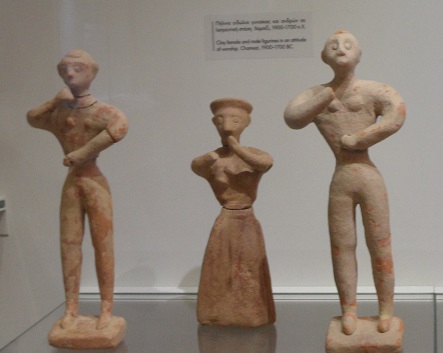
Join Thor and me as we admire the foundations of the Minoan culture on Crete.
NOTE: Of course, Thor and I had to make another trip to Greece, as he’s fallen as much in love with the islands as I am. This time, in addition to other island-hopping, I wanted to return to Crete after 37 years. My first months-long trip was as a hippie backpacker, camping in the ruins and falling under the spell of the mysterious, vanished Minoan culture. This time, I got to introduce Thor to “glorious Kriti” and research more settings for my novel-in-progress, THE ARIADNE DISCONNECT. This new blog series started October 19, 2019, and will continue every Saturday.
Last week, we shared an overview of the Minoan palace complex of Knossos, and some of its treasures in the nearby Iraklion museum. Today we’ll start a tour of the museum with its offerings from the area representing the earliest finds from Neolithic through Bronze Age into the “Protopalatial” period.
Until the late 1800s and early 1900s, the myths of King Minos and his labyrinthine palace were considered just that — as myths. Then archaeologists began to discover evidence of a culture much older than the classic Greek culture and the epics of Homer that mentioned Cretans joining the Trojan War. Heinrich Schliemann made the crucial discoveries at Mycenae and ancient Troy (in Turkey), and attempted to excavate at the rubble later determined to be the site of Knossos. He failed to gain permission, but shortly thereafter, Sir Arthur Evans was able to buy the property. What he found at Knossos basically blew out of the water previous assumptions about the region’s history.

We’ll return to a tour of the site in next week’s post, but first we’ll take a look at artifacts from the early settlement of the area, painting a picture of the beginnings of art and technology on the big island of Crete. The earliest signs of settlement were in the Neolithic era, around 7000 BC. These clay ovens date to between 4500-3000 BC:
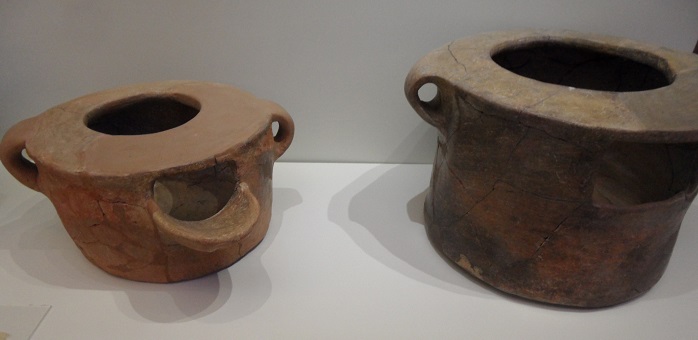

Stone and bone tools from the same time frame:
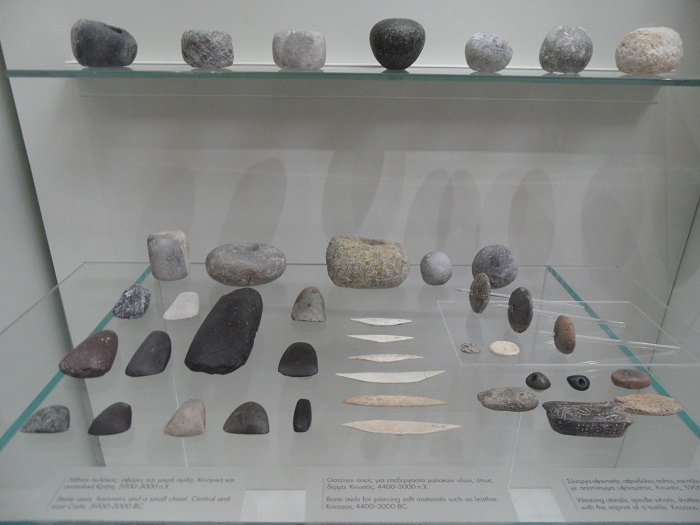
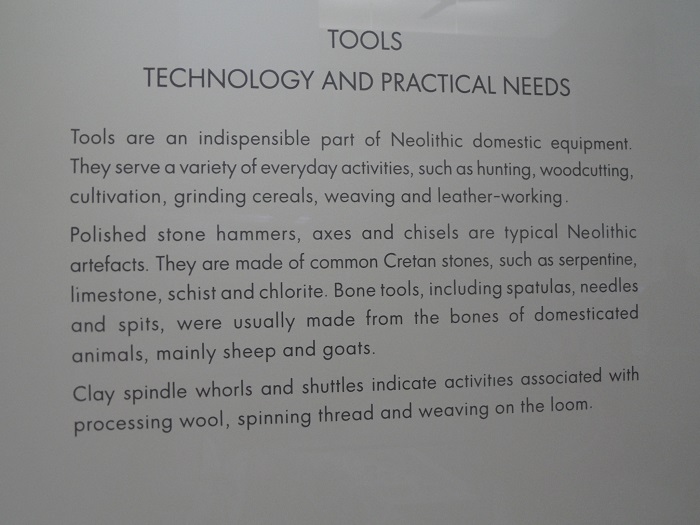
Jewelry and adornments were always important:
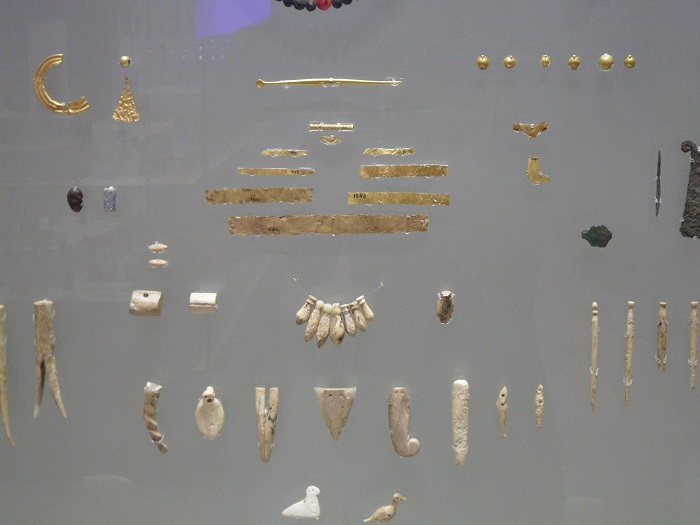
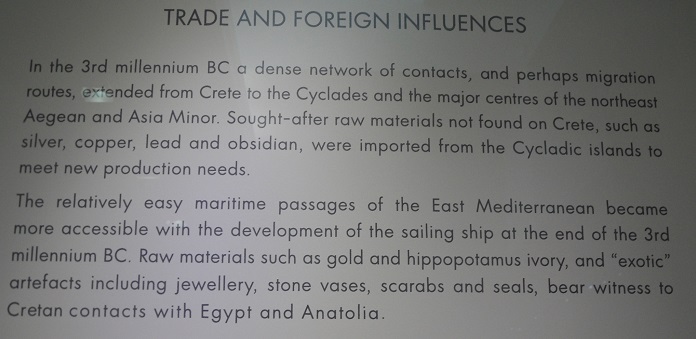
With their developing maritime trade routes, Crete exported timber, textiles, purple dye from shells, wine, and oil. At this point, there was not yet trade with mainland Greece, so much of the arts and crafts influence was from the east and Egypt. The ancestors of the Minoans began to perfect their pottery techniques that started as rather crude, but later became sophisticated and much in demand through the trading routes. These early clay vessels are from Platanos, around 2300-2000 BC:
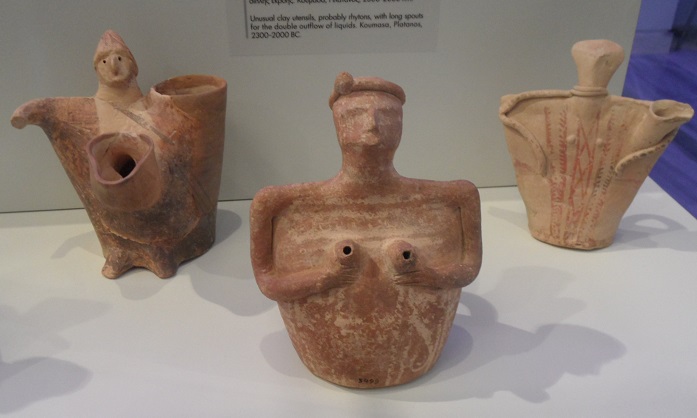
More jewelry, from around 2600-1900:
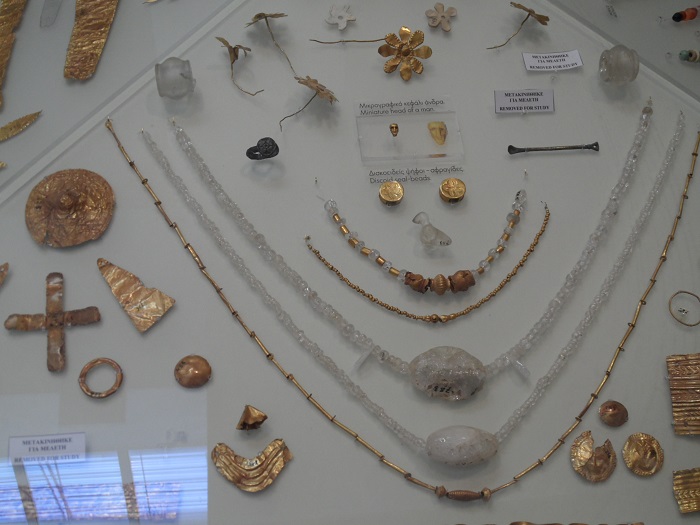
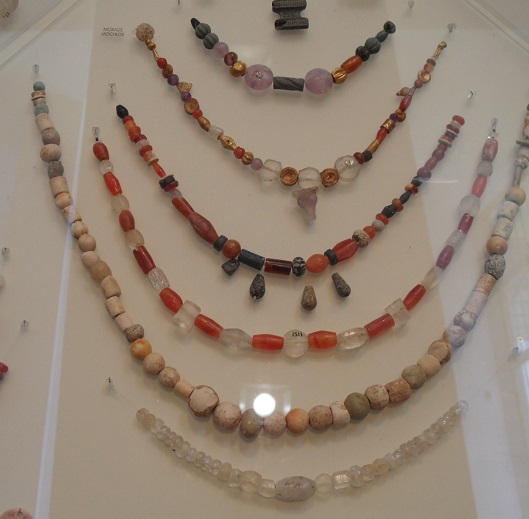
This beautiful gold pendant of two bees around a drop of honey dates from around 2200-1700 BC.
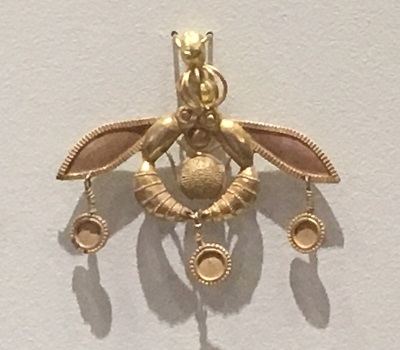
As mentioned, there was trading contact with the Cyclades, and some of their distinctive stone figurines were found in Archanes on Crete, dated around 2300-1700, moving into the “Protopalatial Period” as the Minoans started to create their centralized palace complexes.
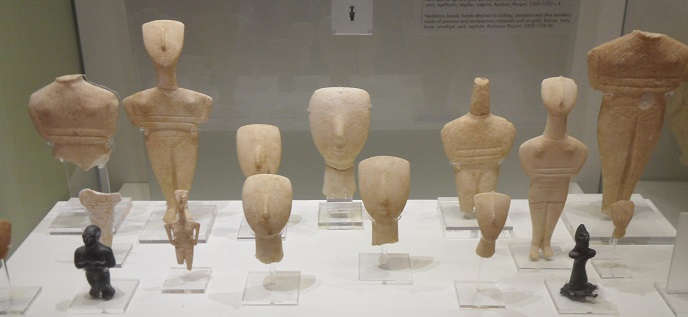
The first palace at Knosso was built around 2000 BC, but destroyed around 1700 BC by an earthquake in this region of “the earth-shaking gods.” A larger palace, the reconstruction of which we can visit now, was build on top of the earlier ruins, which has somewhat complicated the excavations. From this period, around 1800 BC, we see clay figurines of sanctuary worshippers, as religious cults developed centered around an earth goddess. Apparently the Minoans did not have established temples, but usually performed rituals in the open air or sacred caves.
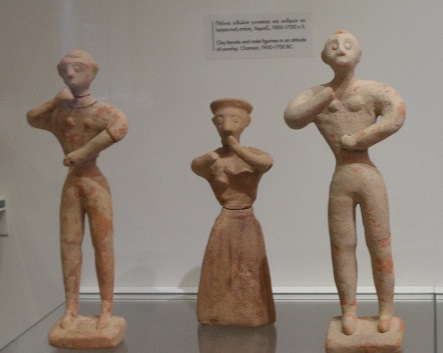
Found with these figurines are also “taximata” (ex votos) of afflicted body parts, used as petitions for healing.
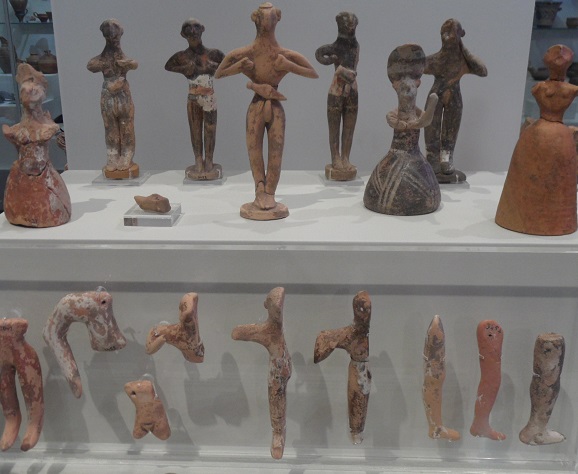
Everywhere in Greece today, tin strips with stamped body parts are still sold, to be left in chapels with prayers for healing. Thor and I bought one to ask for healing of our leg injuries.
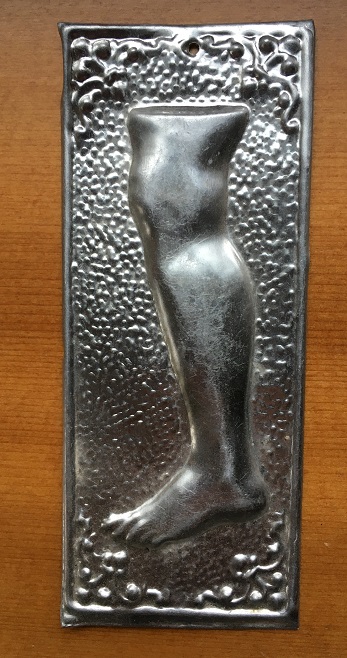
Sacred bulls were honored from early times:
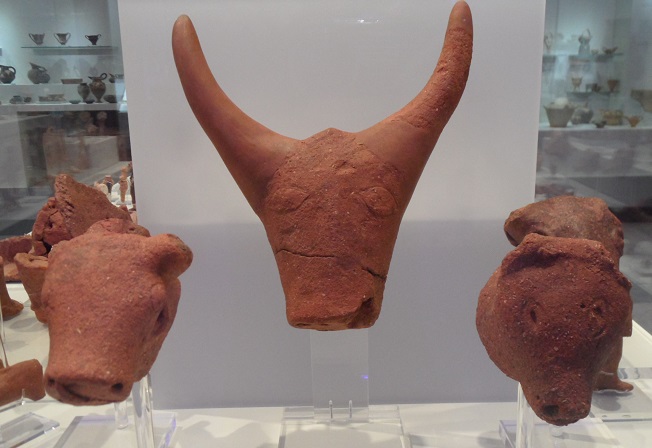
Many of the artifacts from these early times were rather homey, with images of everyday activities. This shallow bowl contains attached images of a shepherd with his flock, from around 1900-1800 BC:
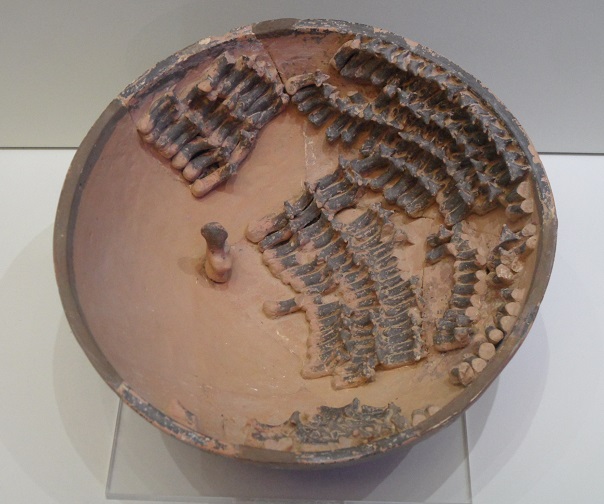
And, of course, images of the goddess were always important:
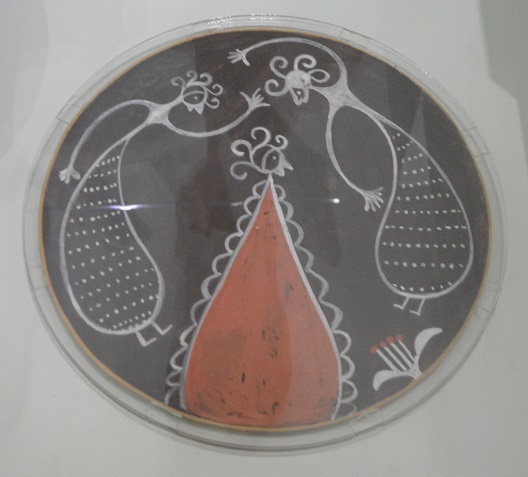

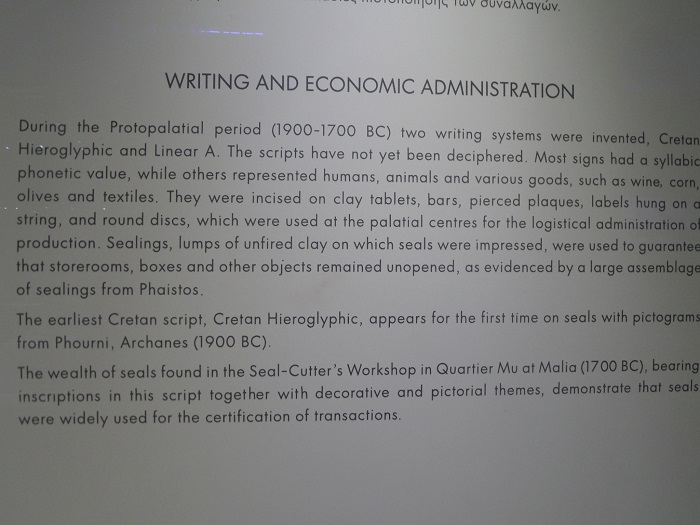
The mysterious Phaistos Disc, stamped with the so-far-undeciphered Cretan heiroglyphic symbols, may be the earliest known example of printing from stamps:
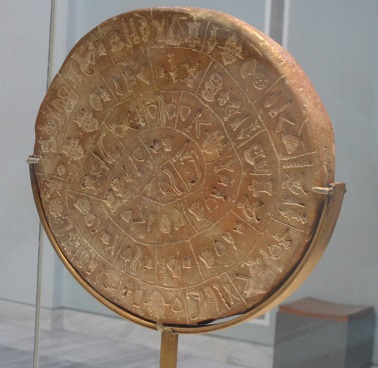
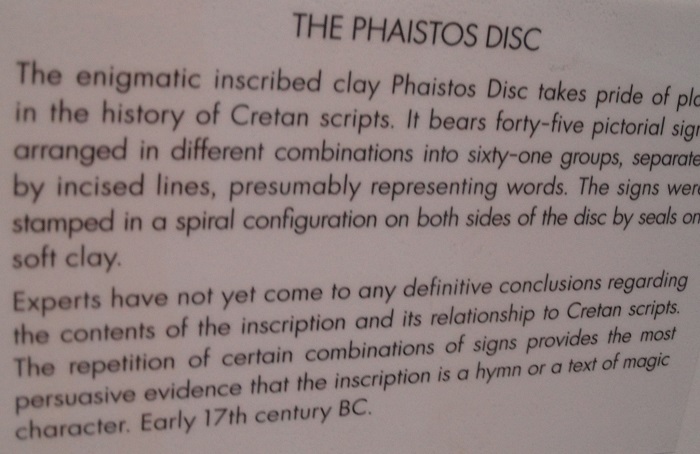
Thor and I are fascinated with the small seal stones (and some fancy seal rings we’ll see later), which triggered the curiosity of Sir Arthur Evans when he saw the tiny engravings on some Mycenaean finds on mainland Greece. He saw some in an Athens antique shop and learned that they came from Crete. On the island, he discovered that local women prized these stones as charms called “milk stones,” without knowing their history. In my novel THE ARIADNE CONNECTION, women in a Cretan mountain village wear such engraved stones in amulet bags for protective magic, hidden under their clothing, while they openly display their approved Orthodox crosses on necklaces. In a discussion with an anthropologist who has extensively researched traditional healing lore in native cultures, I learned that many pagan traditions are indeed preserved by separate men’s and women’s healing practices in Greece. Because the official Greek Orthodox religion frowns on such practices, they are kept secret.
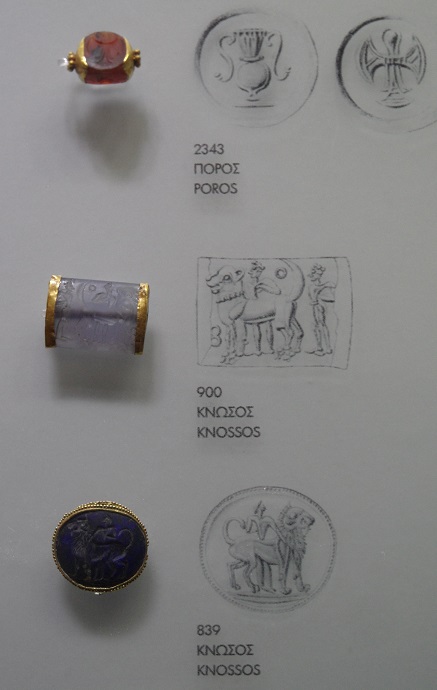
Sir Arthur Evans would go on to find many seal stones in his excavations, along with the clay seals used for identification purposes with trade goods, etc.
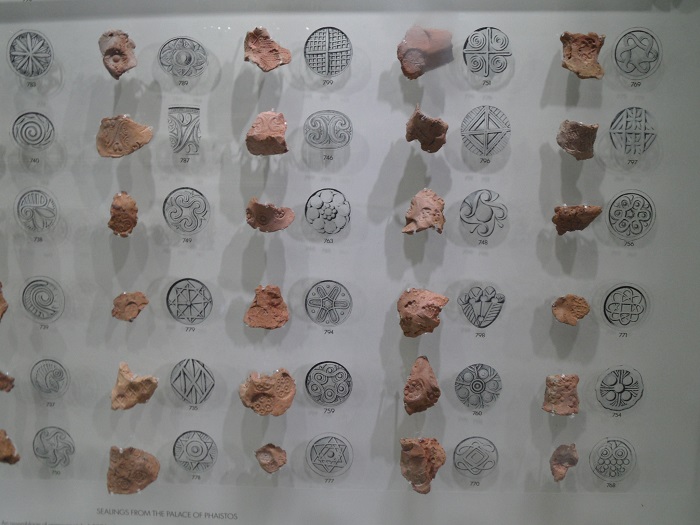
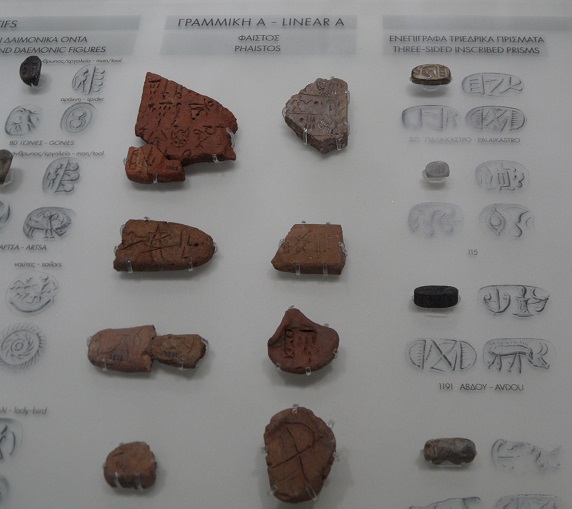
Next week: Back to Knossos and more treasures!
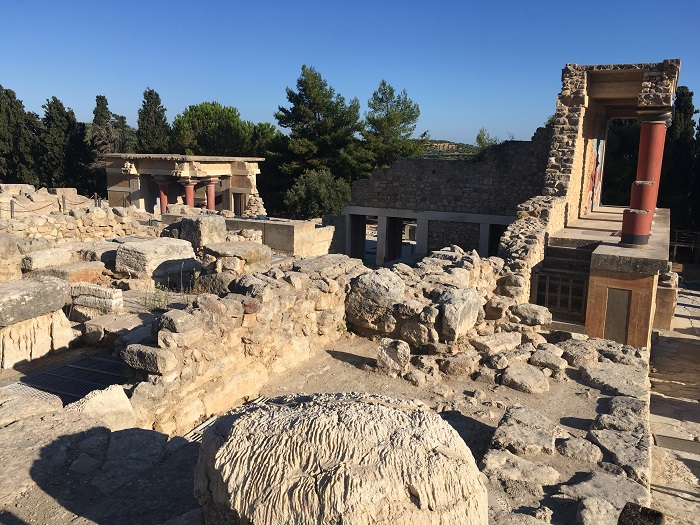
*****
You will find The Rambling Writer’s blog posts here every Saturday. Sara’s latest novel from Book View Cafe is available in print and ebook: The Ariadne Connection. It’s a near-future thriller set in the Greek islands. “Technology triggers a deadly new plague. Can a healer find the cure?” The novel has received the Chanticleer Global Thriller Grand Prize and the Cygnus Award for Speculative Fiction. Sara has recently returned from another research trip in Greece and is back at work on the sequel, The Ariadne Disconnect. Sign up for her quarterly email newsletter at www.sarastamey.com

1 thought on “The Rambling Writer Returns to Crete, part 12: Early Finds in the Iraklion Archaeology Museum”